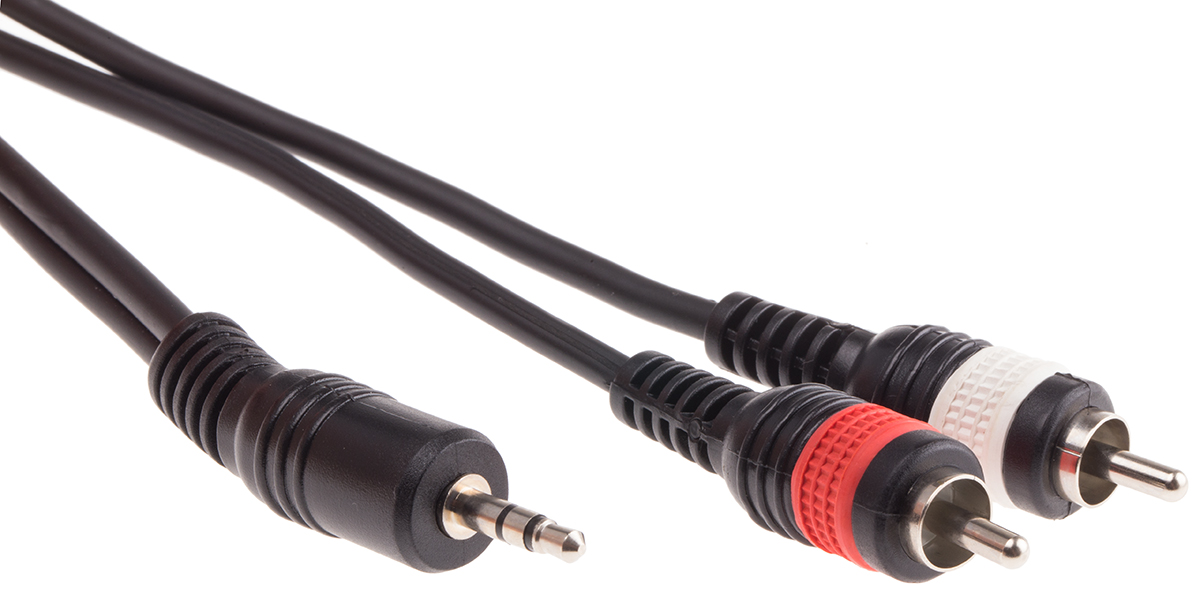
In a world driven by seamless audio experiences, aux cables have held their ground as reliable, versatile, and indispensable components of audio systems. Whether you're connecting your phone to a car stereo, syncing a laptop with portable speakers, or integrating audio components in a studio environment, auxiliary cables continue to play a crucial role. But what exactly makes aux cables stand out amid a sea of other audio connectors? And how do they compare to AV cables, XLR cables, and DIN cables?
Let’s explore everything about aux cables — their functionality, significance, and how they stack up against other popular audio interfaces.
What Is an Aux Cable and How Does It Work?
An aux (short for auxiliary) cable is a type of analogue cable that transmits audio signals between devices. Most commonly, aux cables use a 3.5mm jack — the same one you’d typically find on headphones, car stereos, smartphones, and portable speakers. These cables carry stereo signals and are widely recognised for their plug-and-play convenience and broad compatibility.
Aux cables operate using Tip-Ring-Sleeve (TRS) connections, allowing them to handle left and right audio channels along with a common ground. The cable acts as a direct pathway, enabling clear audio signals without the need for complex adapters or configurations.
Why Are AUX Cables Still Relevant Today?
Despite the rise of wireless technologies like Bluetooth and USB-C audio devices, aux cables remain a preferred solution for several compelling reasons:
- They offer zero latency, ensuring real-time audio output.
- No need for pairing or batteries, making them reliable anytime.
- Universally compatible with thousands of devices.
- Resistant to wireless interference in crowded environments.
In many scenarios — such as professional DJ setups, car audio systems, and emergency audio backups — aux cables provide the simplicity and dependability modern alternatives may lack.
Comparing Aux Cables with AV Cables, XLR Cables, and DIN Cables
While aux cables are popular in consumer audio devices, various other connectors serve distinct functions in audio and video systems. Here's how aux cables compare:
Aux Cables vs. AV Cables
- AV (Audio/Video) cables are used to transmit both sound and video signals using composite connectors (typically red, white, and yellow RCA plugs).
- Aux cables are purely audio-focused and are more compact and portable.
- AV cables are used with televisions, DVD players, and gaming consoles, whereas aux cables are favoured for mobile devices and car stereos.
Aux Cables vs. XLR Cables
- XLR cables are commonly used in professional audio equipment, especially for microphones, PA systems, and mixers.
- XLR cables support balanced audio, reducing noise in long cable runs — something aux cables cannot handle due to their unbalanced design.
- While aux cables suit casual listeners, XLR cables are tailored for studio and stage environments.
Aux Cables vs. DIN Cables
- DIN connectors are circular and were traditionally used in older audio equipment, including hi-fi systems and MIDI instruments.
- DIN cables carry multiple channels of analogue signals, which aux cables do not support.
- DIN is bulkier and less common today, while aux cables have adapted well to modern device trends.
Key Features of Quality Aux Cables
When selecting an aux cable, several characteristics influence performance and durability:
- Gold-Plated Connectors – Resist corrosion and enhance signal clarity.
- Shielded Construction – Reduces electromagnetic interference from other electronics.
- Tangle-Free Design – Braided or flat cables prevent wear from constant use.
- Universal Compatibility – Works with any 3.5mm input/output device.
Applications Where Aux Cables Excel
Auxiliary cables are found in diverse settings due to their flexible utility. Common applications include:
- Car Audio Systems – Connect smartphones, music players, and tablets directly to stereos.
- Portable Speakers – Instantly link devices to external speakers without pairing delays.
- Home Audio Setups – Create quick links between amplifiers, televisions, and sound systems.
- Office and Conference Rooms – Enable quick audio playback during meetings or presentations.
- Recording and DJ Gear – Offer backup connectivity options when other methods fail.
Advantages of Using Aux Cables
Aux cables are more than just legacy connectors; they provide real benefits in the right contexts:
- Plug-and-Play Functionality – No apps, drivers, or setup required.
- Affordable and Accessible – Low cost and widely available in stores and online.
- Minimal Power Consumption – Unlike Bluetooth or USB interfaces, aux cables use no energy.
- Portable and Lightweight – Easily fits into bags, pockets, or car compartments.
Limitations to Consider
Despite their reliability, aux cables do have some constraints:
- No Support for Digital Audio – Unlike USB or HDMI, aux transmits analogue only.
- Short Distance Usage – Signal quality drops over long cable runs.
- Susceptibility to Noise – Unbalanced audio means potential interference in certain environments.
For these reasons, while aux cables serve general consumer needs exceptionally well, professional audio tasks often require alternatives like XLR or digital optical cables.
How to Maintain Aux Cables for Long-Term Use
Proper care can extend the life and performance of your aux cables:
- Avoid Sharp Bends – Prevent internal wire breakage by coiling gently.
- Keep Connectors Clean – Use dry cloths or contact cleaner to remove dirt and dust.
- Store in Cool, Dry Places – Avoid prolonged exposure to moisture and extreme heat.
- Disconnect Properly – Grip the plug, not the cable, to avoid weakening the internal joints.
Final Thoughts: Are Aux Cables Still Worth It?
Absolutely. In a tech landscape driven by smart devices and wireless ecosystems, aux cables continue to offer a reliable, high-quality, and cost-effective audio solution. Whether you're a casual listener, a tech-savvy enthusiast, or someone managing professional gear, having a few dependable aux cables in your arsenal is still a smart move.
With their unmatched ease of use, universal compatibility, and minimal setup hassle, aux cables remain a quiet yet powerful presence in the world of audio connectivity.


































